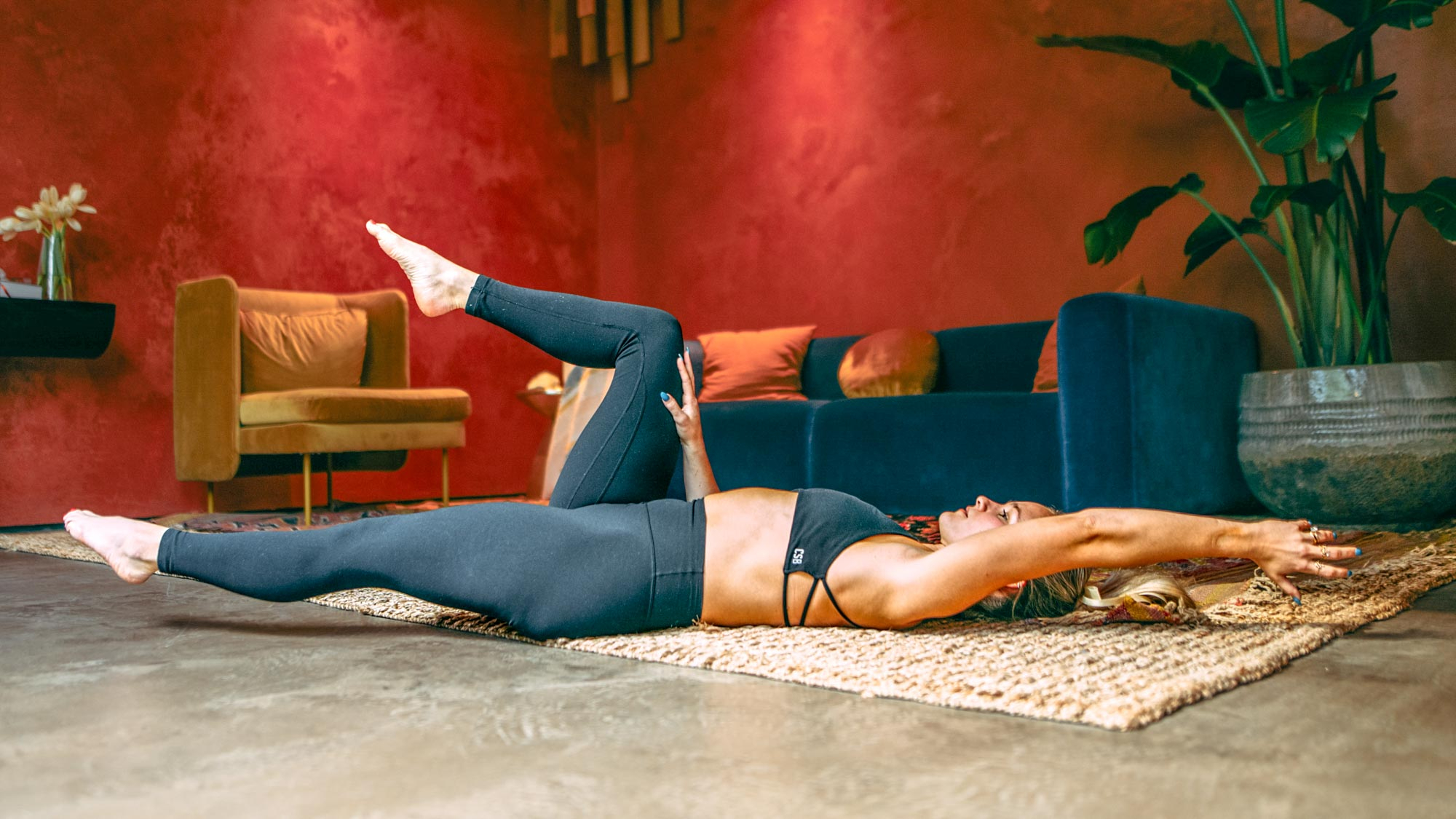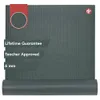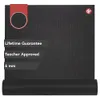You don't need planks to build a stronger core, just this 4-move bodyweight abs workout

Strengthening your deep core is essential not only for athletic pursuits but also for a healthy and injury-free body. While the dream of a chiseled six-pack motivates many of us, the muscles underneath the six-pack play a vital role in supporting and stabilizing your hips and spine.
Planks often come to mind when discussing abs workouts, and for good reason — they’re a great way to target the deep core muscles like your transverse abdominis and internal obliques.
The downside is that many people find planks to be rather boring (also for good reason). Fortunately, there are plenty of other moves that can work the deep core effectively, and all you need is a yoga mat for support.
This four-move workout is designed to strengthen your deep abdominal muscles without a single plank in sight. It’s also beginner-friendly, so if you’ve just started to exercise consistently, consider adding it to your new routine either as a mid-section-focused routine or as a core finisher.
How to do the 4-move deep core workout
All you’ll need for this short workout is a mat and some space on the floor. Perform each exercise for the specified repetitions before moving to the next, resting briefly after you’ve completed all four exercises. Repeat the full circuit two or three more times.
If this is your first time trying a core workout, consider reducing the repetitions as your body acclimates to the movement, and modify the exercises as needed. If you’re no stranger to the mat, you could even add this four-move circuit to your warm-up.
1. Hollow hold
- Lie flat on your back with your arms extended above your head and your legs straight.
- Engage your abdominals, squeeze your inner thighs together, and maintain a neutral position in your lower back.
- Slowly lift your head, shoulders, arms, and legs off the mat.
- Keep your abdominals engaged and your chin slightly tucked. Avoid any arching in the lower back.
- Hold this position for 30 seconds, keeping good form.
- To modify the hollow hold, bend your knees at a 90-degree angle. You can also support your head with your hands if needed, or reduce the amount of time you hold the position.
2. Double heel taps
- Lie flat on your back with your knees bent, feet flat on the floor, and arms long by your side.
- Engage your abdominals and slowly lift your knees to a tabletop position, aligning them directly above the hips. This is your starting position.
- Keep your abdominals engaged and slowly lower your heels to the mat, maintaining a neutral spine.
- Lift your knees back to the starting position.
- Continue for a set of 12-15 repetitions.
- To modify the heel tap, lower the left and right heels separately, alternating between the two sides.
3. Deadbugs
- Lie flat on your back with your knees bent and feet flat on the floor.
- Lift your arms off the mat and reach your fingers toward the ceiling, aligning your wrists and elbows over your shoulders.
- Maintain a neutral lower back and engage your abdominals as you slowly lift your knees to a tabletop position, aligning them directly above the hips. This is your starting position.
- Lower your right arm and left leg toward the mat, elongating the left leg and keeping the core engaged.
- Lift your right arm and left leg back to the starting position.
- Lower your left arm and right leg toward the mat, elongating the right leg and keeping the core engaged.
- Lift your left arm and right leg back to the starting position.
- Continue for a set of 10-12 repetitions on each side.
- To modify the dead bug, lower the arms and legs separately and keep the knees bent. You can also perform the exercise on one side at a time.
4. Bird dogs
- Come to all fours on your mat, with your hands underneath your shoulders and your knees underneath your hips. This is your starting position.
- Keep your core engaged and your spine neutral. Avoid any arching in the lower back.
- Slowly reach your right arm in front of you and extend your left leg behind you, keeping your hips square to the mat.
- Return to the starting position.
- Slowly reach your left arm in front of you and extend your right leg behind you, keeping your hips square to the mat.
- Return to the starting position.
- Continue for a set of 10-12 repetitions on each side.
- To modify the bird dog, reach your arms and legs out separately. You can also perform the exercise on one side at a time.
What are the benefits of core workouts?
Core workouts can improve balance and stability, help you achieve varied athletic goals, and increase strength and endurance for everyday activities, according to the Mayo Clinic.
Get instant access to breaking news, the hottest reviews, great deals and helpful tips.
Whether you’ve been training for a faster 5K, a heavier barbell squat, or just want to climb stairs with ease, core workouts are a necessity for a well-rounded fitness routine.
Core workouts are also important for pelvic floor health, and can strengthen the muscles needed to support internal organs and facilitate bowel and bladder continence.
How often should you do this core workout?
Depending on your fitness goals, activity levels, and injuries, core workouts can be performed anywhere from 3-7 days a week.
Much like any resistance training routine, core workouts should use progressive overload, getting harder as you get stronger.
If you’ve just started, a core workout like the one above could be relatively challenging. To allow time for your abdominal muscles to rest and recover, aim to complete this workout 3 days a week with a day or two of rest in between each attempt.
If you’re a seasoned athlete who performs core-strengthening exercises regularly, then this deep-core workout can become a part of your daily fitness regimen.
Why don't people enjoy planks?
The plank is a static exercise, so once you're in position, all you need to do is hold the posture with perfect form. It sounds deceptively easy, but in reality, it's a challenging move that'll work your core, but isn't all that stimulating.
The aim is to create a straight line from the top of your head through to your feet, and holding that position requires stability from your core. But you also support your bodyweight through your arms, and engage your lower body to keep your legs straight.
So, you feel the effects across your body — as the plank is a compound exercise — but that also makes it quite mentally demanding, especially as you're not moving to distract yourself from the sensations.
Some people use mindfulness techniques to lean into the experience, or try meditating before a workout, to make the process more enjoyable, but there's also no point doing a move that you don't enjoy.
It's important to find workouts and exercises that are fun and you can look forward to, as that's the key to making exercise a regular habit. Fortunately, this short bodyweight workout is full of alternatives you can do instead.
More from Tom's Guide
- A Pilates instructor shares an 8-minute Pilates abs workout for deep core activation — so I tried it
- Forget sit-ups — this no-equipment ab workout blasts your deep core
- Three 10-minute ab workouts that hit all your core muscles

Jennifer Rizzuto is a freelance writer and certified personal trainer based in Long Island, NY. She covers various fitness-related topics and reviews for Tom's Guide. She also writes sketch comedy and short films, and performs frequently as an actor, singer, and improviser. When she's not writing, working out, or performing, you'll find her trying to convince her husband to get a dog.
- James FrewBuying Guide Editor












